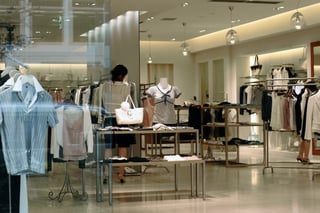
Shelves and tables or countertops are great choices for displaying many different types of merchandise. But sometimes you want items to be “indoors” – displayed where customers can easily see them, but not immediately touch. That’s where display cases come in. Here are five ways to use display cases in your merchandising:
1. Know your options
A display case is any type of fixture that encloses the merchandise behind or under glass. Almost any type of store fixture can serve as a showcase – cabinets, counters, towers, jewelry showcases, wall-mounted-units, trophy cases, etc. They can be any size or shape.
2. Take full advantage of their versatility
Enclosed display cases are ideal to show off anything from fresh salads to museum artifacts. Use them to protect your products from dust or accidental damage or theft. Use them to add perceived value – anything “under glass” automatically seems more important or exclusive.
3. Use display cases to encourage interaction
That may sound counter-intuitive, but display cases that double as counters enable your associates to take out and demonstrate items. Or allow customers to handle them. Although it’s generally recommended to clearly mark prices on items, jewelers often hide or turn over price tags. That facilitates interaction, because customers have to ask to see specific pieces.
4. Take full advantage of their branding potential
Customization is the key to creating display cases that are unique to your brand and merchandise. You can construct display cases from any type of material, including recycled and “found” objects. You can finish them in any way. You can add lighting. Or mirrors. Or wheels. That means you can design cases that blend beautifully with your store décor, whatever the look and ambiance.
5. Fill them with smartly crafted merchandise arrangements
No matter what type(s) of display cases you choose for your retail store, or what items you choose to put in them, bear in mind these classic principles of visual merchandising. It takes the right fixture plus the right presentation to sell most effectively.
The “rule of three.”
The human eye doesn’t like symmetry. When things are perfectly even, there is nothing for your customer’s eye to land on. They see a forest of merchandise, but cannot zoom in on any specific “tree” they want to inspect up close. The rule of three acknowledges that. When you organize displays in groups of three, you can grab attention and keep it. Here are three techniques:
-
Three identical articles in a row
-
Short, medium, tall
-
Narrow, wide, wider
The “pyramid principle.”
Like the rule of three, this visual merchandise technique capitalizes on the eye’s preference for asymmetry. Square and rectangular stacks of merchandise look too uniform to draw attention. Instead, vary the height of displays, so customers will have to move their eyes to see everything. Think of a pyramid when you’re placing items – put the focal point product front and center, and place smaller items (or shorter stacks of items) to the sides to create an overall triangular shape.
How many ways can you use display cases to boost your merchandising?
